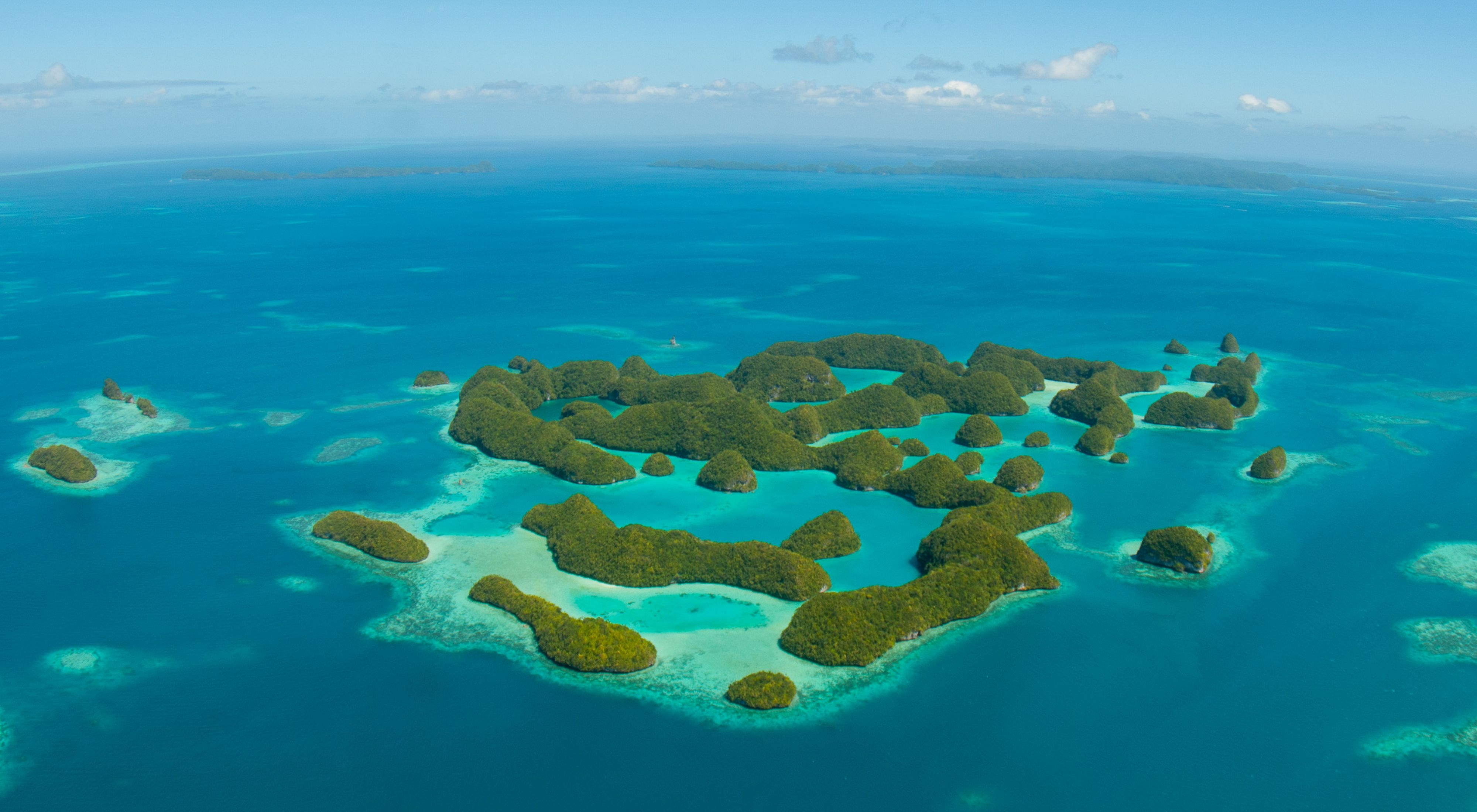Location, Location, Location
How Aquaculture Siting is Supporting Food Security and Conservation in Palau
The Republic of Palau, an archipelago of 340-odd islands southeast of the Philippines, is attempting the complex balancing act of ensuring food sovereignty, strengthening their economy and protecting marine ecosystems. These goals might seem incompatible with one another – and yet, there is one solution that could help the island nation come closer to achieving all three: aquaculture, the practice of farming fish, shellfish, seaweed and other marine species.
But how – and where – aquaculture is developed makes all the difference when it comes to social, economic and environmental outcomes. A new mapping tool, developed by The Nature Conservancy (TNC) in collaboration with Palau’s Bureau of Marine Resources, helps identify the best locations for new aquaculture projects in Palau, and those that should be avoided to prevent negative consequences.

The Importance of Fish in Palau
Given its location in the middle of the Pacific Ocean, it should be no surprise that fish has long been a staple of Palau cuisine. The average Palauan eats nearly 75 pounds of seafood every year, most of which is wild caught, not farmed; until recently, aquaculture has played a minor role in Palau’s food system, and despite rapid growth – particularly in the cultivation of giant clams, rabbitfish and milkfish – its contribution is still dwarfed by wild fisheries. (This isn’t true elsewhere in the world; in fact, aquaculture accounts for more than half of seafood consumed globally.)
Due to a combination of factors, however, Palau’s fisheries are increasingly under threat. After a marked decline in fish stocks, the country – which has a long history of environmental conservation – moved in 2015 to create one of the largest marine reserves, where commercial fishing is limited to 20 percent of its exclusive economic zone (EEZ). While measures like these are important when it comes to protecting biodiversity, climate change is expected to continue thinning out fish populations; by some estimates, the productivity of Palau’s fisheries will shrink by a quarter between now and 2050.
NASA Features Palau Aquaculture
Our aquaculture project was part of NASA's Earth Science in Action Comic Strip Contest.
See the Comic StripsThe Aquaculture Opportunity
With wild fisheries stretched to the limit, expanding terrestrial agriculture may appear to be an obvious alternative to meet food needs – but Palau lacks any substantial amount of land appropriate for cultivation. Instead, Palau has come to rely on imported food. Though wild-caught fish and crops like taro are still central to the local cuisine, more and more, Palau’s citizens are filling their plates with canned meat and other highly processed foods. The shift away from traditional diets has contributed to public health concerns, including high rates of obesity and diabetes. It has also undermined the country’s food security; at the height of the pandemic, global supply chains were snarled by disruptions and delays, which left Palau and other import-dependent communities vulnerable to food shortages.
While Palau’s emphasis on marine conservation is valuable in its own right, it’s also central to the country’s tourism-driven economy. Every year, tens of thousands of people travel to the islands to experience their breathtaking natural beauty and rich biodiversity. Outnumbering residents five to one, these tourists support about 38 percent of Palau’s gross domestic product and 45 percent of its employment. However, they also put more pressure on Palau’s already taxed food supply.
Aquaculture has the potential to help Palau address these challenges – if developed and managed responsibly. This means choosing species, farming equipment, and management practices that minimize environmental impact (or even result in net positive environmental outcomes), as well as siting projects in suitable locations. In Palau, which is home to vibrant and diverse ecosystems, including coral reefs, seagrass beds, and mangroves, smart siting is particularly important in order to protect marine environments.
Mapping A Way Forward
With financial support from NASA, TNC and the government of Palau have designed an interactive mapping tool to help Palauans determine the best spots for aquaculture farms. By using NOAA and NASA satellite data, the tool accounts for dozens of factors, from geographic qualities like water depth and ocean currents, to infrastructure considerations like the presence of docks and ports. These factors help narrow down all possible location options to just those that are appropriate for individual species and don’t interfere with sensitive habitats, culturally significant sites or economic activities like trade and tourism.
By facilitating the sustainable expansion of aquaculture within Palau, this mapping tool is supporting the country in meeting its goals of growing domestic food production and preserving its marine ecosystems while sustaining a thriving economy.
The success of this project in Palau sets the stage for similar projects elsewhere in the world. TNC’s global aquaculture team is at work developing a similar tool for a portion of Lake Tanganyika that lies within Tanzania, as well as the Baja California peninsula in Mexico. While these countries have different priorities and concerns than Palau, they all share the overarching goal of developing an aquaculture industry that’s good for people and the planet.


